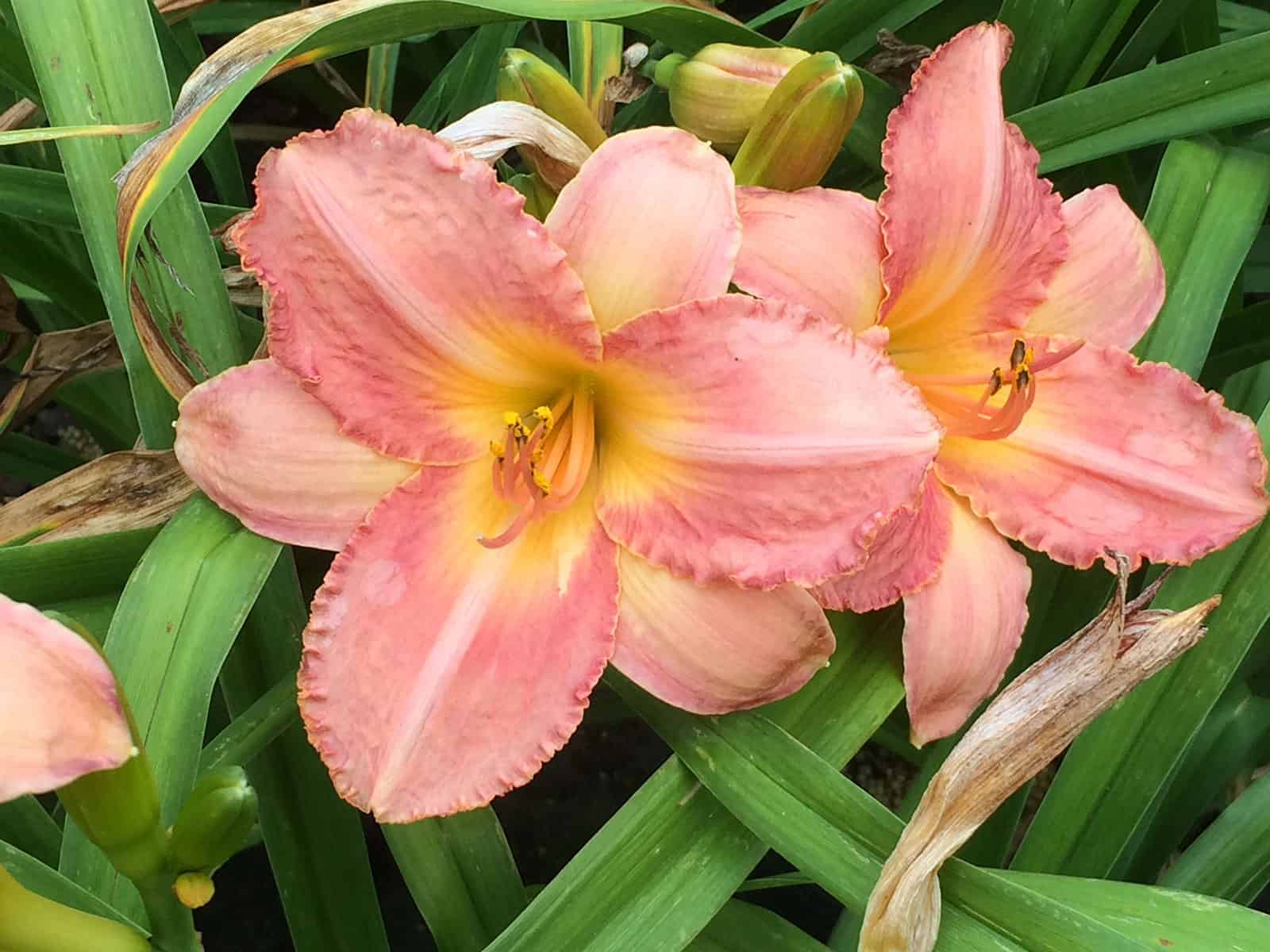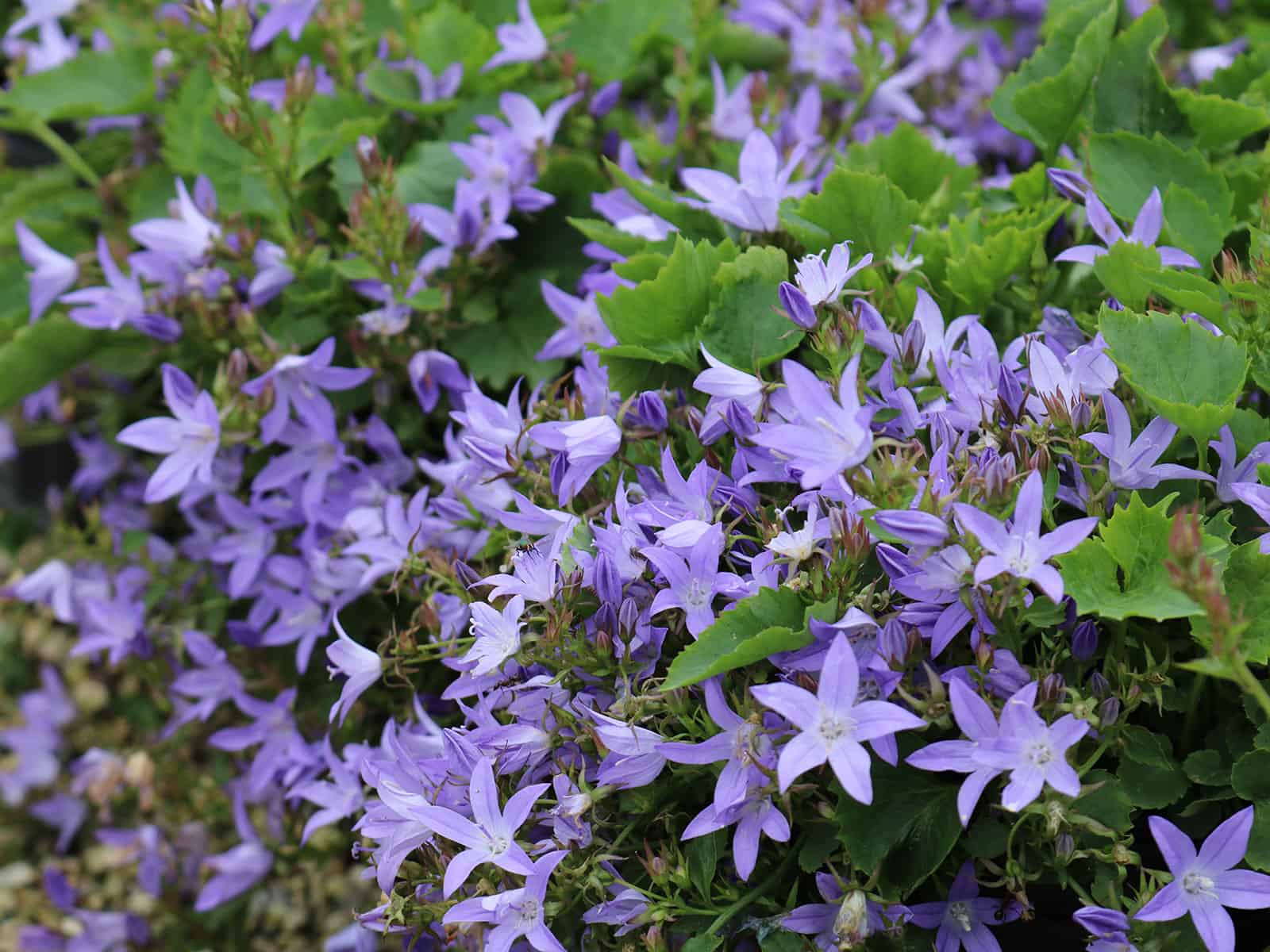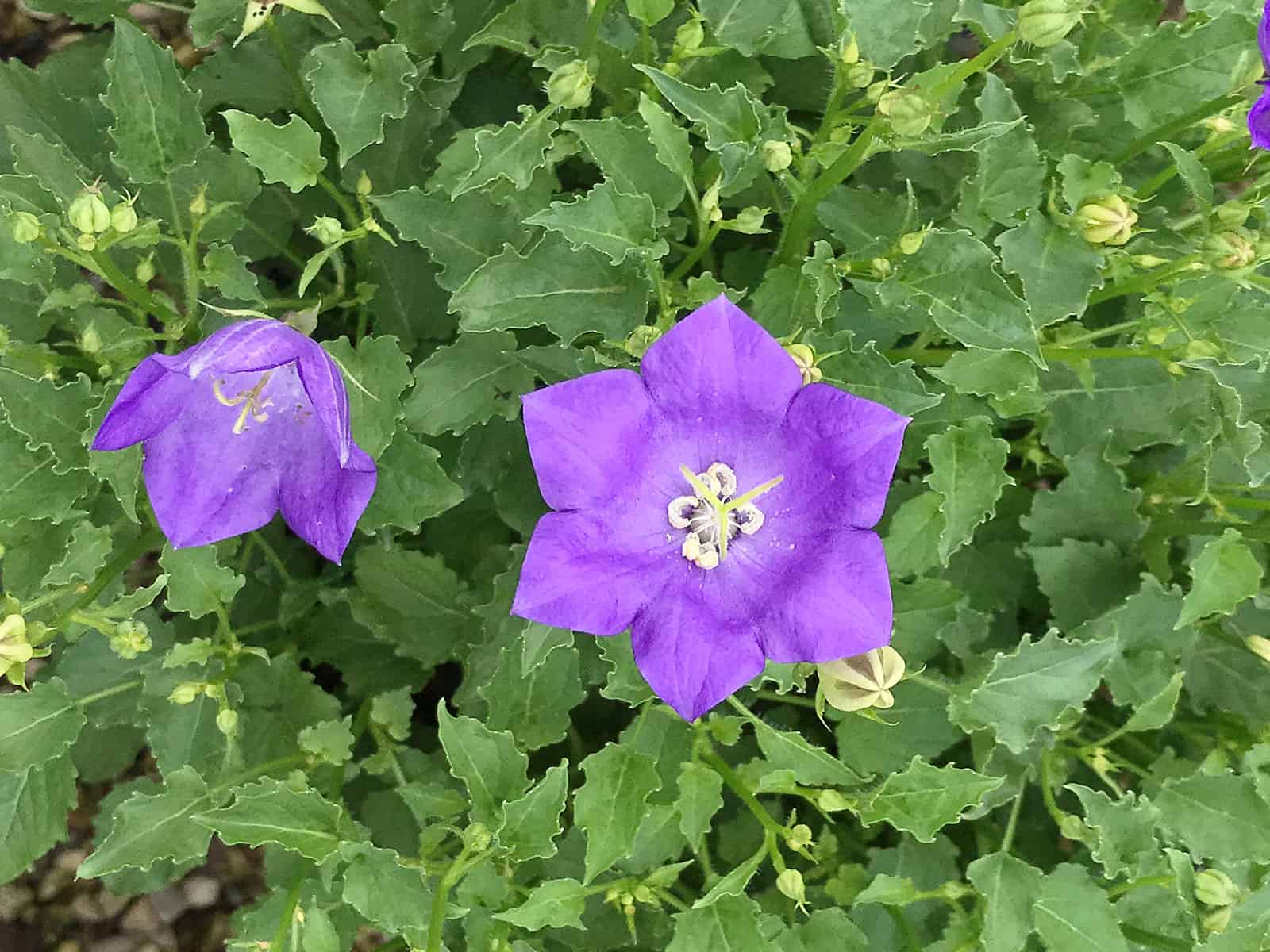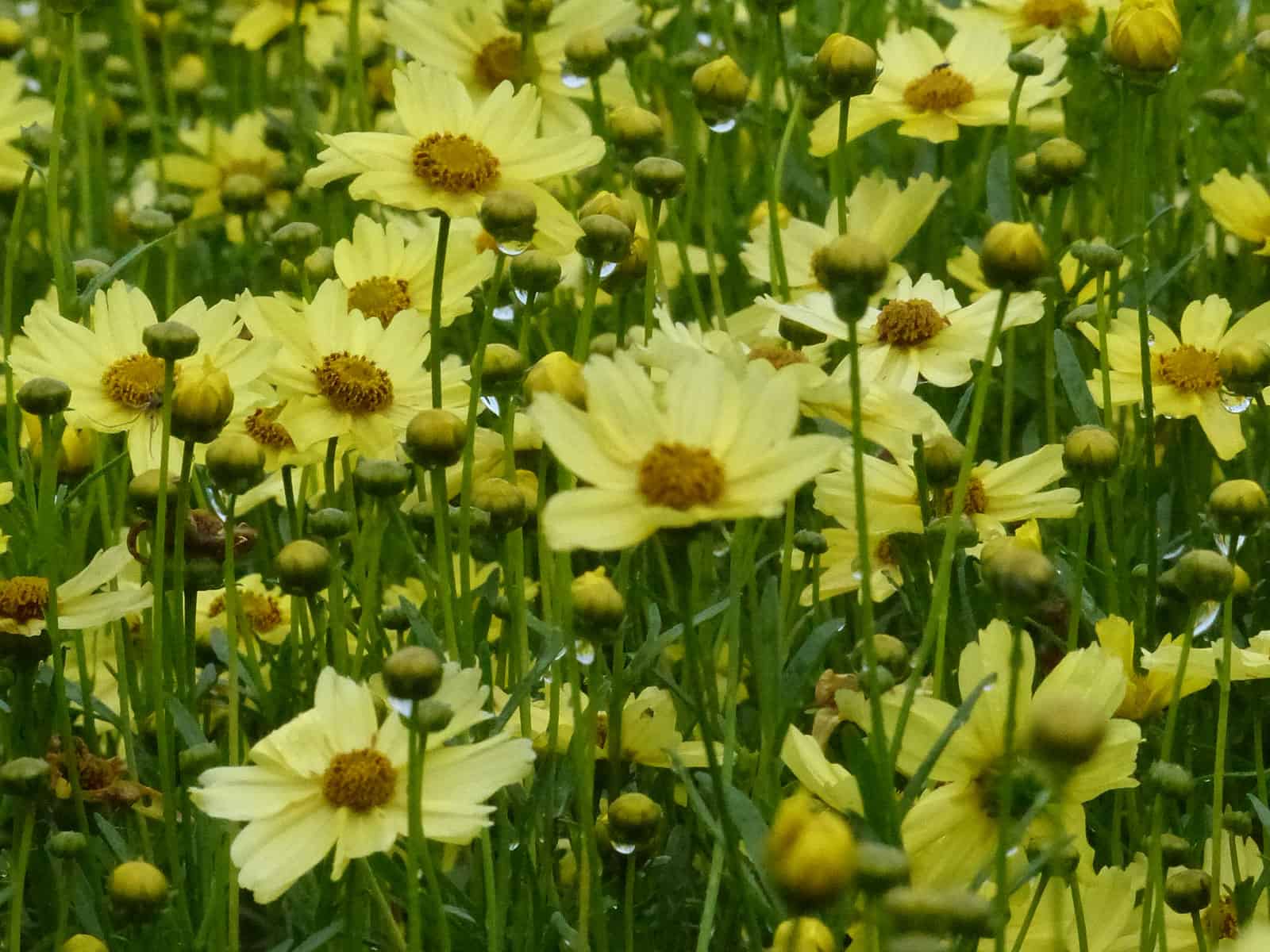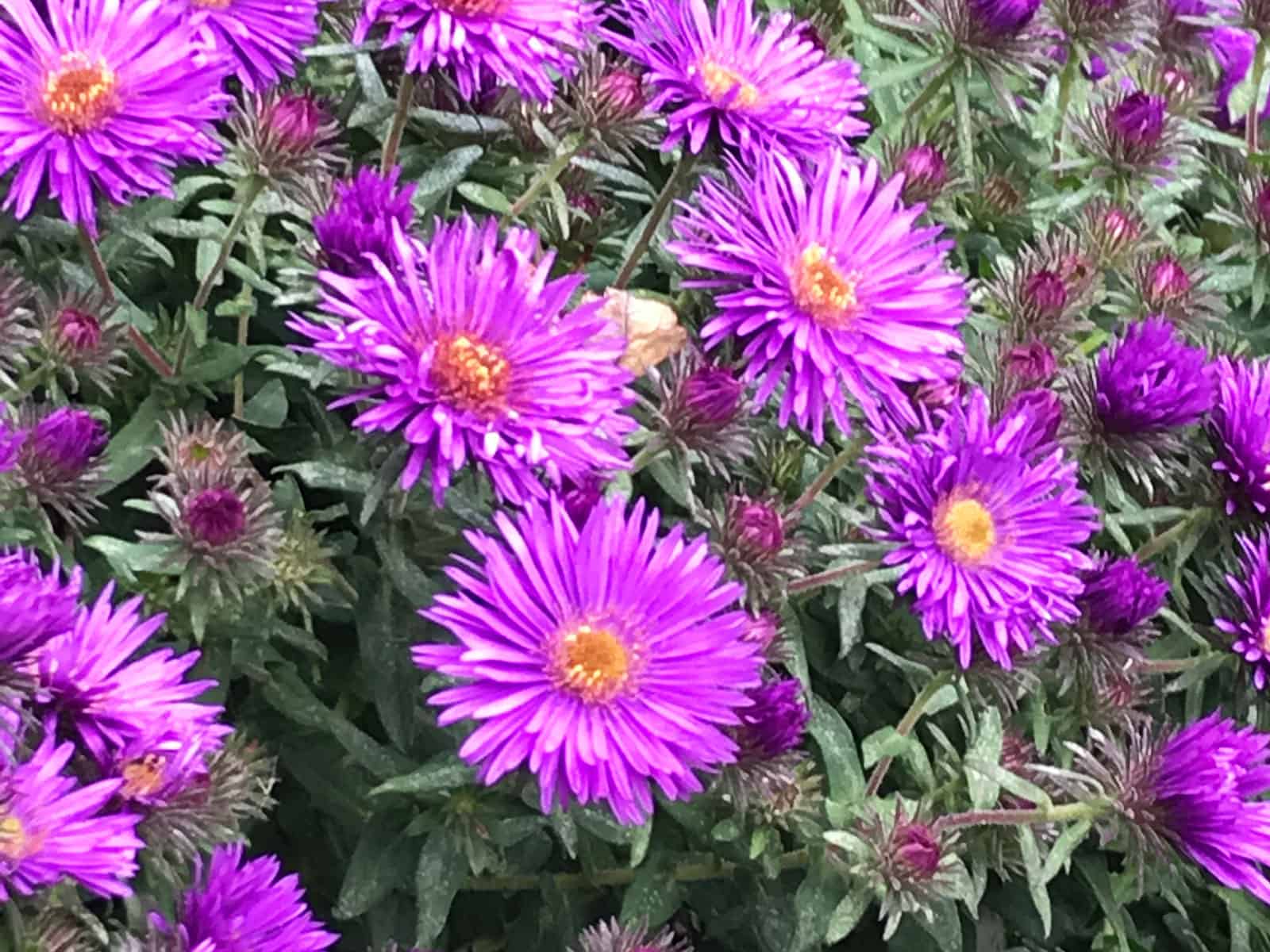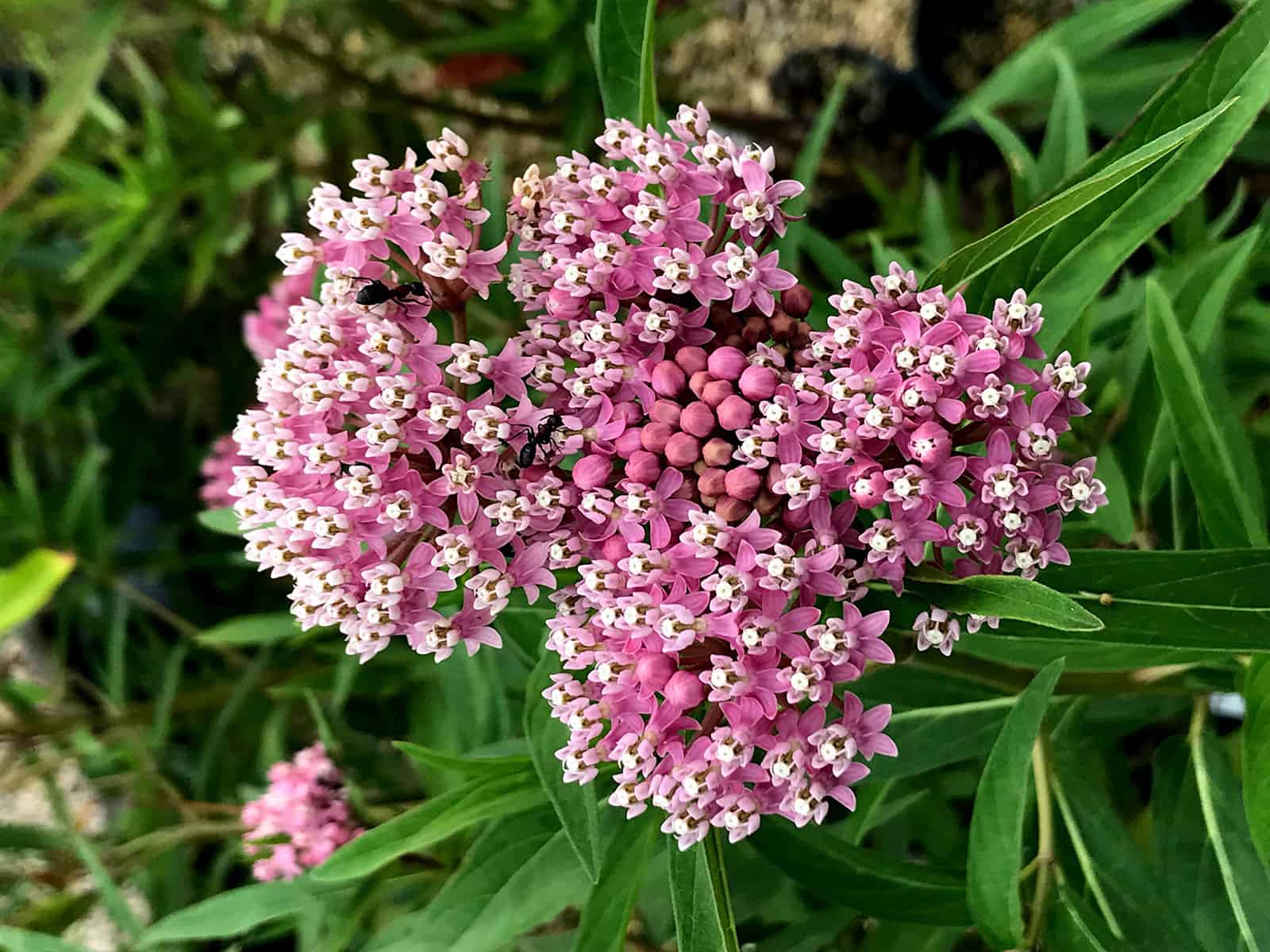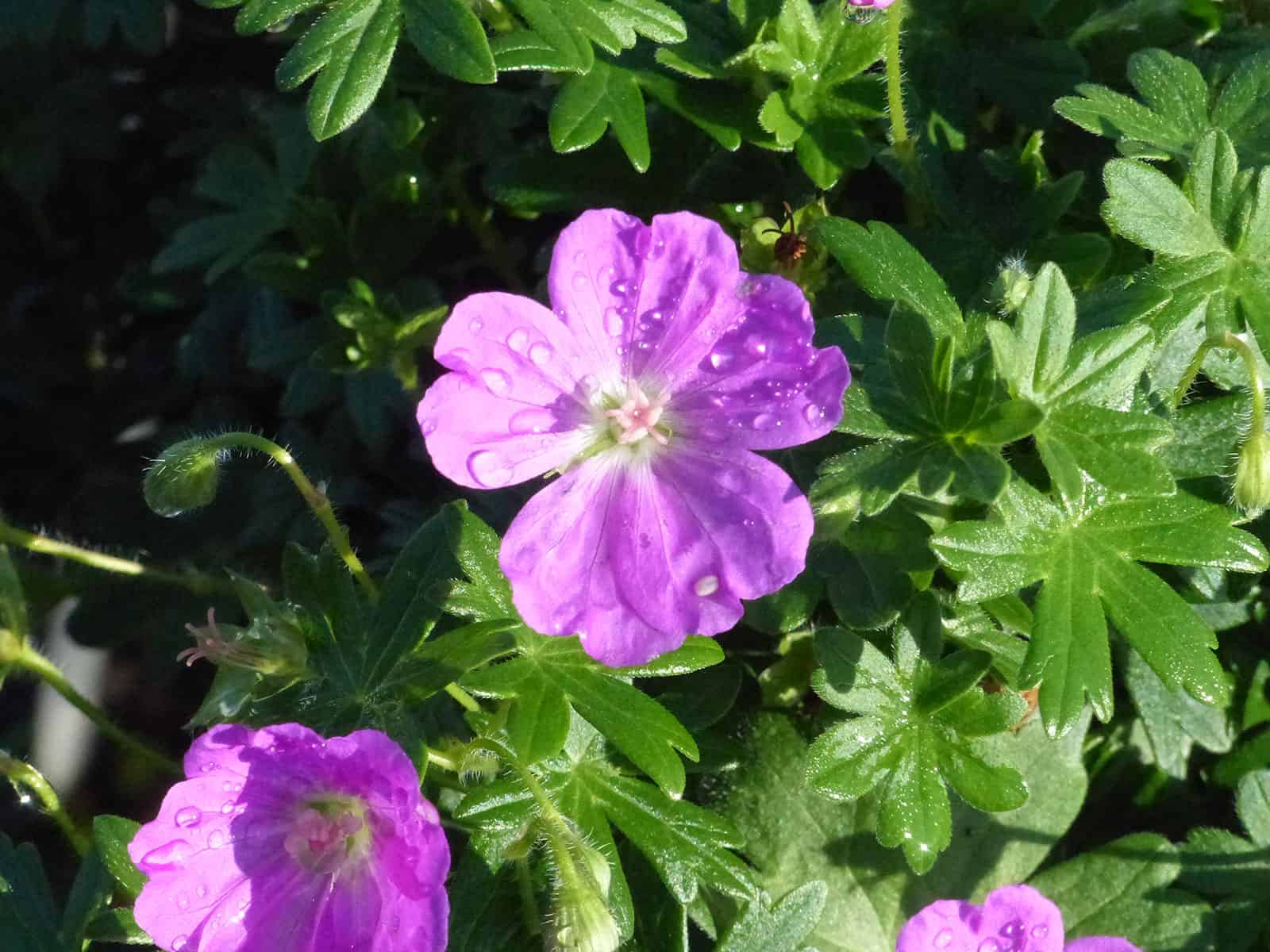
Easily grown in average, medium moisture, well-drained soil in full sun to part shade. Tolerates some drought, but produces most vigorous growth in moist, humusy soils with good drainage. Deadheading is tedious for larger plantings and probably unnecessary. Side stems may be removed at any time to control spread. If not deadheaded, some self-seeding may occur in ideal growing conditions. Foliage may be lightly sheared back and shaped to revitalize after flowering. This is a variable plant that is noted for having better tolerance for heat in hot summers and for cold in cold winters than most other species of geranium. Propagate by division, tip cuttings or seed.
Geranium sanguineum, commonly called bloody cranesbill or bloodred geranium, is an herbaceous, clump-forming perennial that typically grows in a mound to 9-12” tall with white-hairy trailing stems spreading over time to as much as 24” wide. It is native to Europe and Asia. It is perhaps the most common species of geranium grown in the U.S. today. Foliage consists of small, shallowly cut, dark green basal leaves and thinner, more deeply cut stem leaves. Solitary flowers (to 1 1/2” diameter) feature five unnotched magenta to purple crimson petals with darker veins. Flowers primarily bloom in May and June with a sparse but variable rebloom occurring throughout summer. After first fall frost, foliage usually turns attractive shades of red.
Genus name comes from the Greek word geranos meaning crane in reference to the fruit which purportedly resembles the head and beak of a crane.
Specific epithet comes from the Latin word sanguineus meaning blood red in reference to the flower color and red autumn leaves of the straight species.
‘Max Frei’ is a cultivar that is noted for its compact growth habit and reddish-purple flowers. It typically forms a spreading mound of foliage typically growing 4-9” tall and spreading 12-24” wide. It features 5-petaled, reddish-purple flowers and deeply-lobed, dark green leaves. Flowers bloom in late spring. Foliage often turns attractive shades of red in autumn.

Chicago Fire Daylily features bold ruby-red trumpet-shaped flowers with chartreuse throats at the ends of the stems from early to mid summer. The flowers are excellent for cutting. Its grassy leaves remain green in color throughout the season. The fruit is not ornamentally significant.
Chicago Fire Daylily is an herbaceous perennial with tall flower stalks held atop a low mound of foliage. Its medium texture blends into the garden, but can always be balanced by a couple of finer or coarser plants for an effective composition.
This is a relatively low maintenance plant, and is best cleaned up in early spring before it resumes active growth for the season. It is a good choice for attracting butterflies and hummingbirds to your yard. It has no significant negative characteristics.
Chicago Fire Daylily is recommended for the following landscape applications:
- Accent
- Mass Planting
- General Garden Use
Chicago Fire Daylily will grow to be about 24 inches tall at maturity extending to 3 feet tall with the flowers, with a spread of 24 inches. When grown in masses or used as a bedding plant, individual plants should be spaced approximately 18 inches apart. It grows at a medium rate, and under ideal conditions can be expected to live for approximately 10 years.
This plant does best in full sun to partial shade. It prefers dry to average moisture levels with very well-drained soil, and will often die in standing water. It is not particular as to soil type or pH. It is highly tolerant of urban pollution and will even thrive in inner city environments. This particular variety is an interspecific hybrid. It can be propagated by division; however, as a cultivated variety, be aware that it may be subject to certain restrictions or prohibitions on propagation.

The Chicago Peach Daylily showcases soft pink and peach-colored trumpet flowers with lemon-yellow throats, rising above low-growing mounds of arching green foliage. Blooming from early to mid-season, this low-maintenance plant is perfect for borders, beds, and containers, and becomes drought-tolerant once established.
Ornamental Features: Chicago Peach Daylily presents striking pink trumpet-shaped flowers with peach hues and lemon-yellow throats at the stem ends from early to mid-summer. The flowers are excellent for cutting, and its grassy leaves stay green throughout the season.
Landscape Attributes: Chicago Peach Daylily is an herbaceous perennial featuring tall flower stalks above a low mound of foliage. Its fine texture distinguishes it from other garden plants with coarser foliage. This plant requires minimal maintenance and is best cleaned up in early spring before active growth resumes. It attracts butterflies and has no significant negative characteristics.
Recommended Landscape Applications:
- Mass Planting
- General Garden Use
- Groundcover
Chicago Peach Daylily reaches about 24 inches in height at maturity, extending to 32 inches with the flowers, and spreads approximately 24 inches. For mass planting or bedding, space individual plants about 18 inches apart. It grows at a medium rate and can live for around 10 years under ideal conditions. As an herbaceous perennial, it dies back to the crown each winter and regrows from the base each spring. Avoid disturbing the crown in late winter when it may be less visible.
This daylily thrives in full sun to partial shade and adapts well to both dry and moist locations under typical garden conditions. It is not particular about soil type or pH and is highly tolerant of urban pollution, making it suitable for inner city environments. This variety is an interspecific hybrid and can be propagated by division, though certain propagation restrictions may apply.
Serbian bellflowers have an easy, undemanding habit. Creating a stream of lavender blue, the 1-inch-diameter star-shaped blossoms bloom reliably from late spring to early fall. The foliage remains evergreen in mild winters and needs to be sheared only once in a while to keep its appearance tidy. ‘Blue Waterfall’ flows beautifully along bed edges and through rock gardens in full sun to partial shade.
Campanula carpatica, the tussock bellflower or Carpathian harebell, is a species of flowering plant in the family Campanulaceae, native to the Carpathian Mountains of Central Europe. It is a low-growing herbaceous perennial, with long stems bearing solitary blue bell-shaped flowers. It was introduced to the Royal Botanic Garden at Kew in 1774 by Nikolaus Joseph von Jacquin. Several cultivars in shades of white, blue, pink and purple, have been developed for garden use.
This introduction is a very long-blooming perennial, forming a spreading mound of bright-green ferny leaves. Small butter-yellow daisies appear in succession from early summer to late fall, each petal delicately serrated at the tips. Shear plants lightly in August to encourage renewed blooming. Great for the front of a sunny border, or planting in mixed containers. Tolerates heat and humidity. Plants will flower best in a sunny location. Blooms are larger, and flower colour is darker than the older selection ‘Moonbeam’. From Blooms of Bressingham®. USPP#16096: unlicensed propagation prohibited.
An explosion of color, Alma Potschke Aster is blanketed in warm reddish-pink daisy-like flowers with cheery yellow centers. A color breakthrough in this type. Very showy. Pairs nicely with grasses. Asters provide a nectar source for butterflies as well as a host plant for their larvae. Clusters of daisy-like flowers are produced at the tips of branching stems and create a stunning display against the dark green foliage.
Purple Dome New England aster is a refined plant for the garden border with its symmetrical, compact mounded form reaching only 2’ tall. In early autumn, it is covered with dense clusters of purple, daisy-like, semi-double flowers.
Asclepias tuberosa is a species of milkweed native to eastern North America. It is a perennial plant growing to 0.3–1 metre tall, with clustered orange or yellow flowers from early summer to early autumn. The leaves are spirally arranged, lanceolate, 5–12 cm long, and 2–3 cm broad.
Cinderella is part of the Asclepias genus and is a Swamp milkweed variety. Its scientific name is Asclepias incarnata ‘Cinderella’. This variety typically blooms in the following colours: French rose, and typically produces a medium vanilla fragrance.


